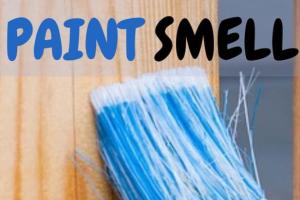11 Effective Ways to Get Rid of Paint Smells in Your Home

-
Quick Links:
- 1. Ventilation is Key
- 2. Use Natural Odor Absorbers
- 3. Baking Soda Magic
- 4. Activated Charcoal
- 5. Vinegar Solutions
- 6. Essential Oils for Freshness
- 7. Fresh Flowers and Greenery
- 8. Air Purifiers
- 9. Use Fans Strategically
- 10. Heat and Humidity Control
- 11. Commercial Odor Neutralizers
- FAQs
1. Ventilation is Key
One of the simplest and most effective ways to eliminate paint smells is to ensure proper ventilation in the area where you painted. Open windows and doors to create a cross-breeze that helps to disperse the odors.
Consider using exhaust fans if available. According to a study from the Environmental Protection Agency, proper ventilation can drastically improve indoor air quality and reduce harmful VOCs (Volatile Organic Compounds) associated with paint fumes.
2. Use Natural Odor Absorbers
Natural materials can absorb and neutralize odors effectively. Common household items like coffee grounds, baking soda, and white vinegar can be placed in bowls around the painted area to help absorb the smell.
3. Baking Soda Magic
Baking soda is renowned for its odor-absorbing properties. Simply place open containers of baking soda throughout the room. It’s non-toxic, affordable, and a great way to tackle tough odors.
4. Activated Charcoal
Activated charcoal is another powerful odor absorber. Place bags of activated charcoal around the room to effectively trap paint smells. This method is often used in professional settings due to its efficiency.
5. Vinegar Solutions
Vinegar is a natural deodorizer. Mix equal parts of water and vinegar in a spray bottle and lightly mist the area. The smell of vinegar will fade quickly, taking the paint smell with it.
6. Essential Oils for Freshness
Essential oils like lavender, lemon, and eucalyptus not only smell great but can also help mask unpleasant odors. Use a diffuser to disperse essential oils into the air, creating a pleasant environment.
7. Fresh Flowers and Greenery
Introducing fresh flowers or plants can uplift the ambiance of a room while providing a natural scent. Plants like peace lilies and snake plants are great options that can also improve air quality.
8. Air Purifiers
Investing in a good air purifier can significantly improve indoor air quality. Look for models that specifically target VOCs and odors, making them a perfect addition to your post-painting setup.
9. Use Fans Strategically
Positioning fans in the room can help circulate the air and push out the paint smells more quickly. Ensure that the fans are directed towards windows or doors to create a strong airflow.
10. Heat and Humidity Control
Controlling the indoor temperature and humidity can help speed up the drying process of paint and reduce odors. A dehumidifier can be particularly useful in damp conditions.
11. Commercial Odor Neutralizers
If natural methods don't work, consider using commercial odor neutralizers. Brands like Febreze or OdorBan are designed to tackle tough odors and can be a quick fix.
FAQs
1. How long does paint smell last?
The duration of paint smell can vary depending on the type of paint used and ventilation. Generally, it can last from a few hours to several days.
2. Can paint fumes be harmful?
Yes, prolonged exposure to paint fumes can lead to health issues, especially for sensitive individuals. Proper ventilation is crucial during and after painting.
3. What type of paint has the least odor?
Low-VOC and zero-VOC paints are designed to have minimal odor compared to traditional paints.
4. Is it safe to sleep in a freshly painted room?
It's best to wait until the smell has dissipated and the paint is completely dry before sleeping in a freshly painted room.
5. Can I speed up the drying process of paint?
Yes, increasing ventilation and using fans can help speed up the drying process, which in turn can reduce odors more quickly.
6. Are there any natural ways to mask the paint smell?
Yes, using essential oils, fresh flowers, and natural odor absorbers like baking soda or vinegar can help mask the smell.
7. How can I improve indoor air quality after painting?
Ventilating the area, using air purifiers, and incorporating plants can significantly enhance indoor air quality post-painting.
8. Can I use air fresheners to get rid of paint smells?
Air fresheners can temporarily mask odors, but they do not eliminate the source. It's better to use odor absorbers or neutralizers.
9. How often should I ventilate a room after painting?
It's advisable to ventilate the room frequently for at least 24 to 48 hours after painting, depending on the paint type and room conditions.
10. What should I do if the paint smell lingers?
If the smell persists, try increasing ventilation, using more odor absorbers, or consider professional cleaning or air quality solutions.